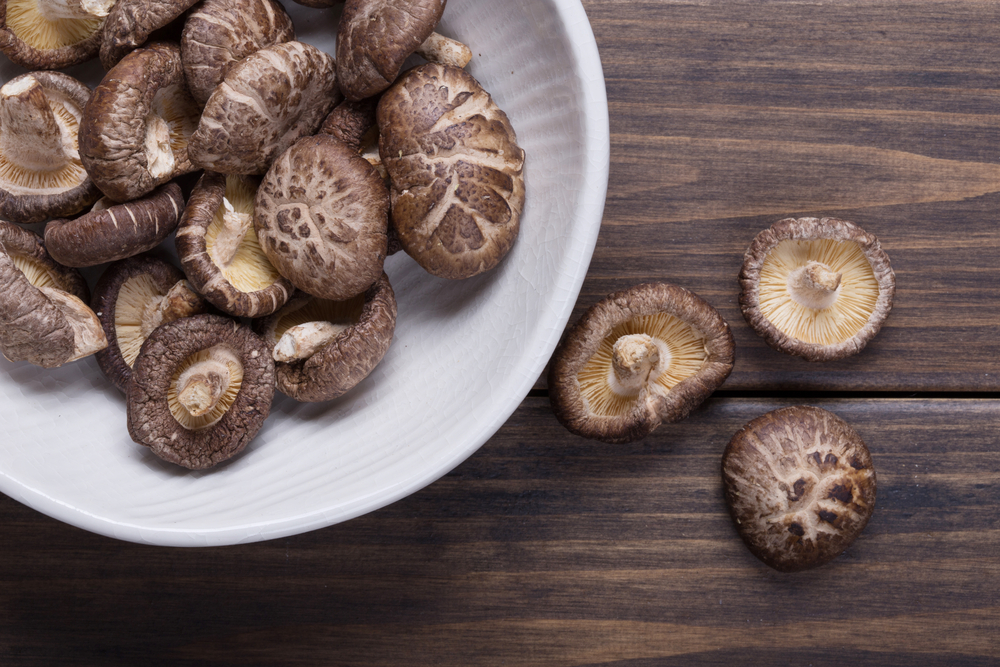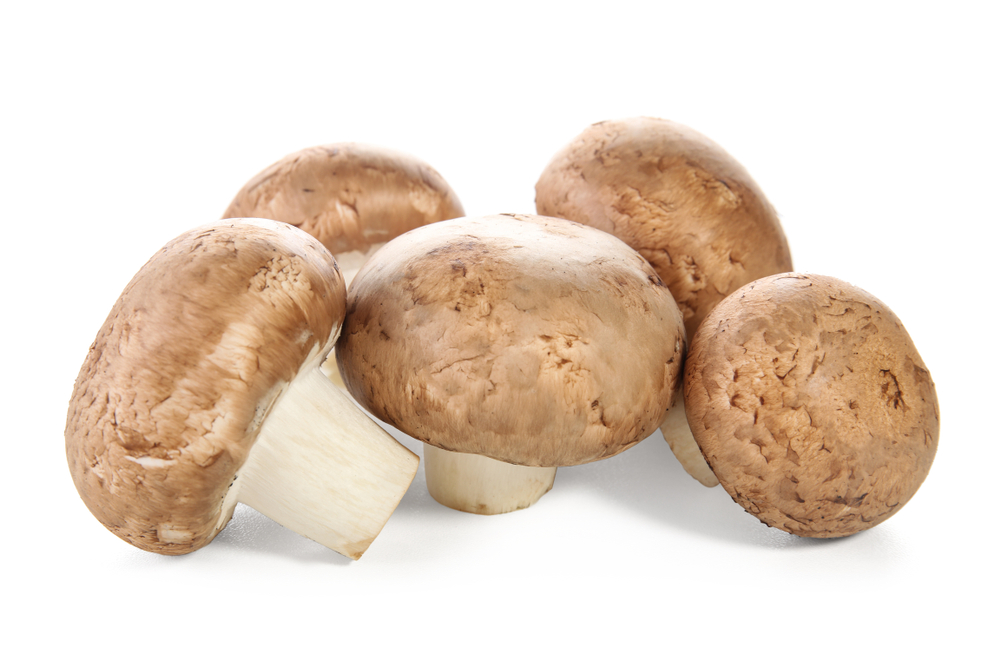Truffles, predominantly harvested in the wild and served in restaurants in Paris, have an aroma unlike any other and are sometimes sold for thousands of dollars per pound. Yet, fascinatingly, the chemical responsible for this signature smell, androstenone, cannot be detected by approximately 25% of the population.
For the remaining 75% of the population, however, truffles have a musky, sulfuric odor with notes of fruit, mushrooms, and chocolate.
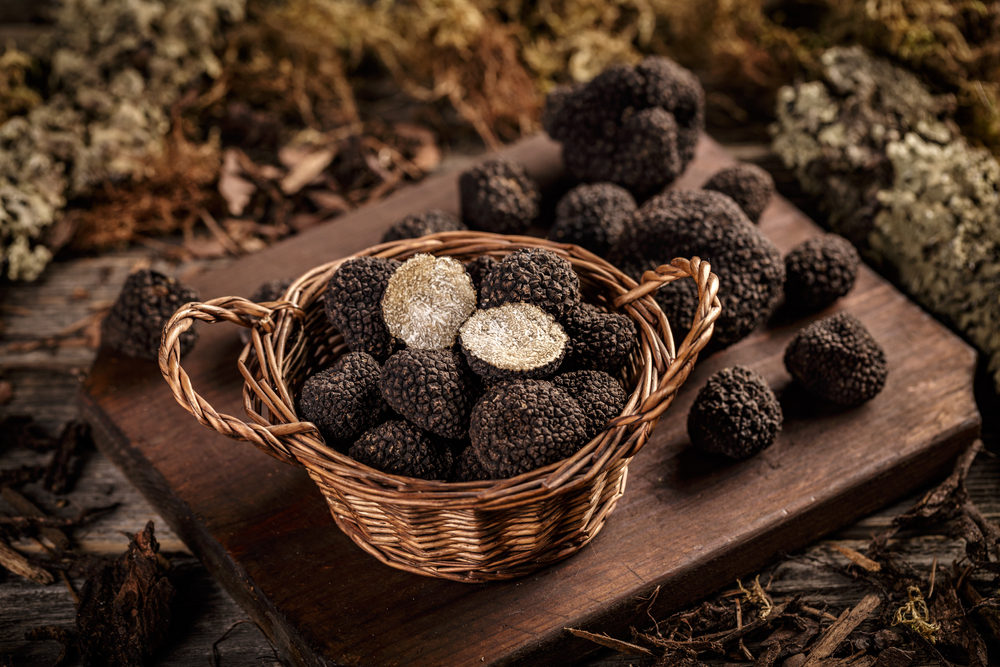
What Are Truffles?
A common misconception about truffles is that they are a mushroom, which is understandable, as they are a type of fungi. However, different than the criminis and shitakes that one usually finds poking up through the soil overnight, truffles grow entirely underground on tree roots. Truffles are also set apart from the common mushroom because the method used for cultivating them is pretty complex; In fact, only twelve truffle farms exist in the US, which is a factor that contributes to their sky-high price point.
What Do Truffles Taste Like?
Pinpointing what exactly truffles taste like can be difficult as their flavor is as unique as their aroma. Truffles are musky; they are earthy, and they have the umami flavor of a mushroom without tasting like a mushroom. Their flavor is complex, with rich, robust, oaky, nutty hints that finish off with a floral note. You’re most likely to encounter two truffle varieties: black truffles and white truffles.
Black Truffle Taste
“Subtle” isn’t a word typically associated with truffles, but between black truffles and white truffles, black truffles are the more subtle. Still musky, earthy, and pungent but require cooking to unleash their food spectrum of flavor.
White Truffle Taste
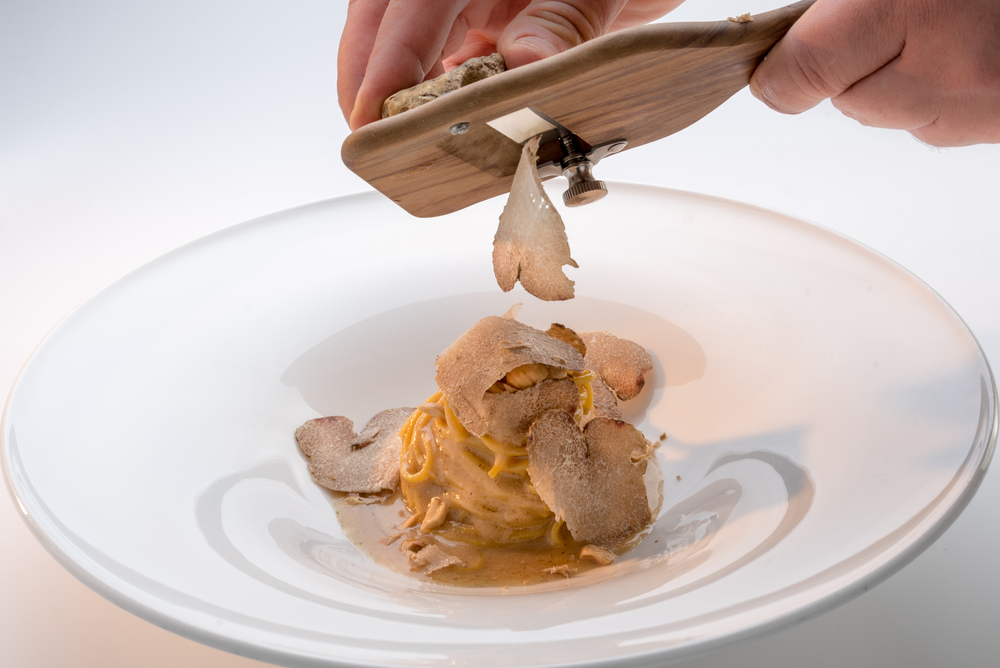
Gourmands refer to white truffles as a “white diamond”; they are so incredibly fragrant and rich in flavor that they need only to be freshly shaved or grated to unleash their flavor. White truffles could be described as black truffles with the volume turned up, also offering a garlicky note. White truffles also come with a higher price point, around $195 per ounce, compared to black truffles’ $75; another big difference between white and black truffles.
How to Eat Truffles
How you eat truffles depends on which variety you would like to enjoy. For example, white and black truffles can both be eaten raw, but black truffles require some heat to coax the flavor out of them, whereas white truffles can simply be sliced thin or finely grated and added to a meal.
How to Eat Black Truffles
To extract the most flavor from black truffles, you will want to cook the truffle. Black truffles can be simmered into a sauce to elevate the sauce’s flavor, or sauteed in butter and drizzled over a protein like chicken or veal.
How to Eat White Truffles
White truffles are incredibly fragrant and pungent when eaten raw. You can enjoy white truffles thin-sliced or grated atop an already-cooked meal such as pasta or an omelet.
What Goes Well With Truffles?
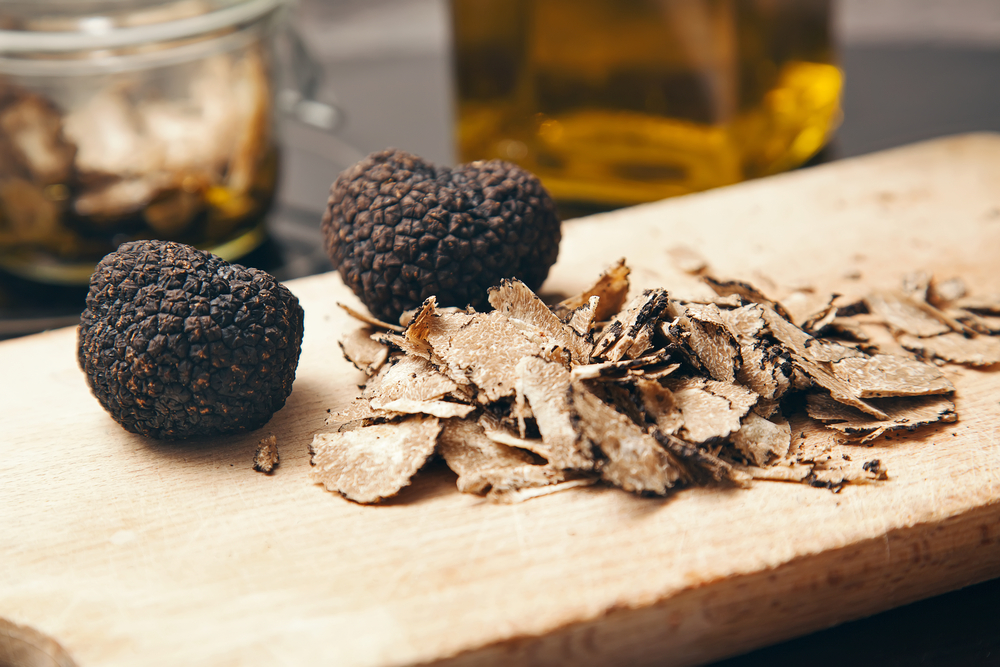
Truffles have an incredibly complex flavor; for this reason, they are best used as a way to lift a simple dish. Popular truffle accompaniments include:
- Risotto
- Scrambled eggs
- Potatoes
- Pasta
- Cream sauces
Try experimenting with using truffles to add a little complexity to your next simple dish!
What is Truffle Oil?
Truffle oil is rising as a popular gastronomic go-to for fries and wood-fired pizza. But, disappointingly, the unique truffle flavor offered from a drizzle of this trendy oil is synthesized, and no real truffles are used in most truffle oil.
How To Find Truffles
Foraging for truffles is not quite as simple as knowing where to look and then going out and collecting them. Because they are such a delicate and coveted ingredient, you must receive authorization via a permit to harvest truffles legally. Once that is obtained, there are several different avenues you can take in your quest for truffles, including employing the aid of pigs, dogs, or developing a keen eye to help you seek them out.
Where to Find Truffles
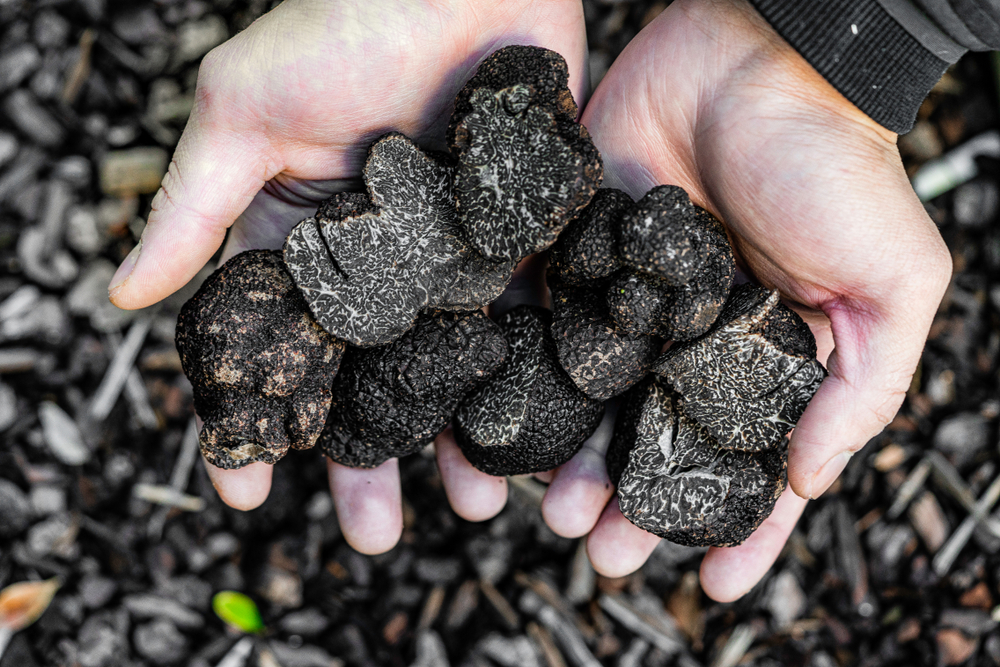
Truffles are most commonly found in forests of western Europe and the northwestern united states. Truffles prefer moist soil and begin growing after significant amounts of rainfall. Therefore, it’s best to search for truffles in the damp ground about two weeks after heavy rainfall. Truffles also like to grow around the bases of certain trees, such as:
- Beech trees
- Fir trees
- Oak trees
- Hazel trees
- Poplar trees
- Pine trees
Truffles have a symbiotic relationship with these varieties of trees, which is a factor in what makes farming them so difficult; commercial truffle farms would have to grow the tree and recreate the conditions in the soil that cause truffles to grow, which is not easily replicated.
What do Truffles Look Like In the Ground?
If you’re foraging for truffles, the first thing you want to keep an eye out for are trees that have “browning” or “brulee” in the ground around its base. This bruleeing appears as an area where the earth will look dark and burned; this is because truffles prevent any vegetation from growing in the soil on top of them. Dig in places where you can see small holes in the soil, as this is a sign that rodents, having smelled the musky truffles, were digging in search of food. The truffles themselves look like small potatoes and can be either black, white, or burgundy.
How Deep Do Truffles Grow?
If you’re going foraging for truffles, it wont be necessary to bring any heavy equipment for unearthing the ground. All you require is a small rake or spade. Truffles can be found about one to six inches beneath the soil at the base of their host tree, requiring more of a keen eye to harvest them than elbow grease.
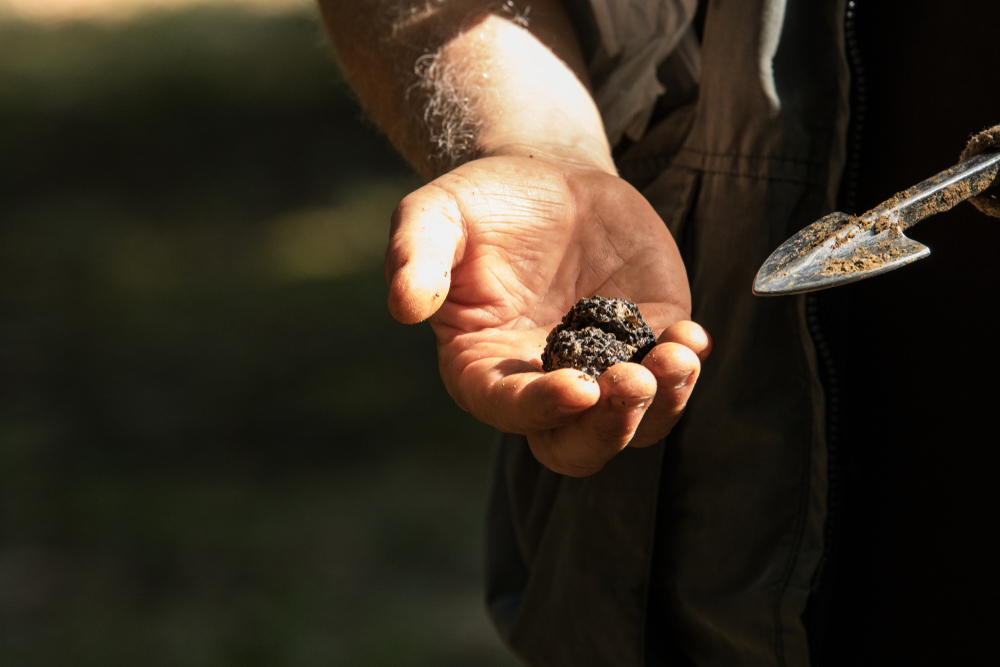
Truffle-Hunting Pigs
Pigs, specifically female pigs, have been used for centuries to help sniff out truffles. The scent of a truffle’s fruiting body is very similar to the musk of a male pig, which causes the female to be attracted to the scent and seek it out. Pigs are incredibly intelligent and can be trained to alert their handler to the presence of a truffle– without eating or destroying the expensive ingredient. Truffle pigs have a relationship with their handlers similar to a domestic pet. It’s worth noting that truffle pigs have been banned in Italy, as the pigs’ hooves cause damage to the root systems that are essential to the growth of truffles.
Truffle-Hunting Dogs
A well-known fact about man’s best friend is that their sense of smell is hundreds of times more sensitive than their human companion’s. This trait has made dogs an invaluable asset in law enforcement, but it has also proven useful in the truffle industry as you can train dogs to lock in on the sent of truffles below the soil. Bloodhounds in particular are known for their scent-tracking abilities, but when it comes to which breed can sniff out coveted truffles the curly-haired Lagotto Romagnolo comes out on top.
Can You Grow Truffles in the US?
If you’re trying to find truffles without a dog or traveling to Italy, it is possible to grow truffles in the US, but it’s no easy task. Truffles cannot grow without tree roots; to have tree roots, you’ll need to have a tree. There are around a dozen truffles fams in the pacific northwest, and cultivating truffles in these farms requires inoculating sapling tree roots with the spores that truffles are grown from. Even with this method, it still takes around six to seven years before the truffles can be harvested.
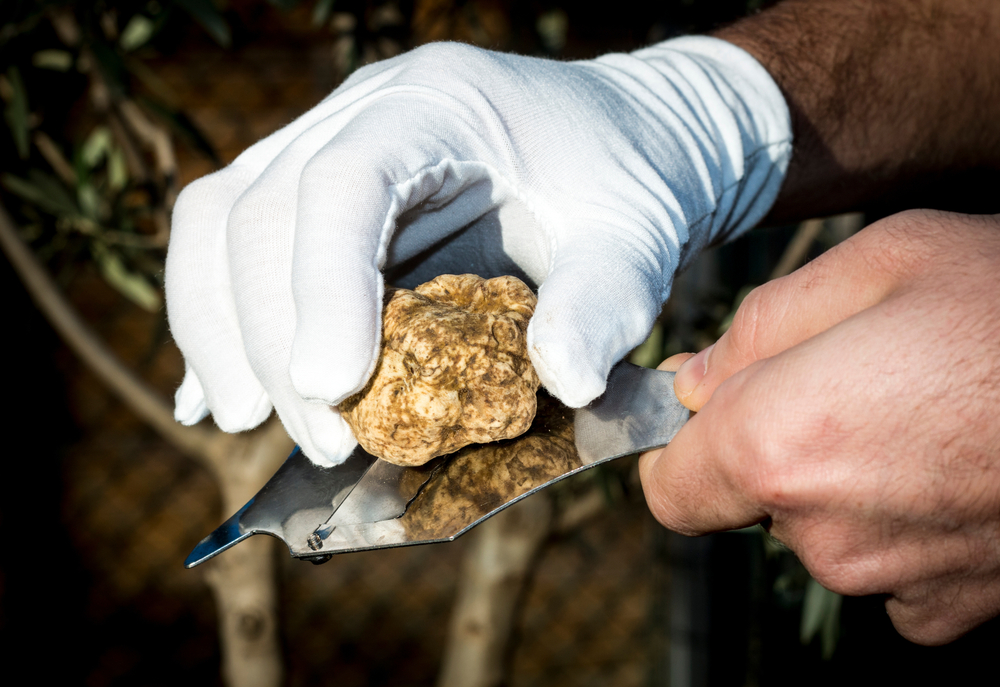
Do Truffles Go Bad?
If you’re lucky enough to get your hands on these delicacies, it would be a travesty to let them spoil. Fresh truffles are at their peak within five days, after which their flavor will begin to fade. Once the flavor of a truffle starts to fade, it does not necessarily mean that it is no longer safe to eat, however. If kept at room temperature, truffles are safe to eat for up to two weeks.
How to Store Truffles
Truffles can be kept at room temperature for up to two weeks but should ideally be eaten within two days of harvesting or purchasing. Still, if you find yourself with an excess of truffles, they can be stored in the refrigerator or infused into salt, butter, or oil.
Storing Truffles at Room Temperature
Truffles are found growing in damp, moist soil, so you may think preserving that moisture would be vital in prolonging their shelf life. However, you would be wrong; keeping moisture levels as low as possible is critical in prolonging the shelf life of your truffles. To store your truffles and keep moisture under control:
- Clean and dry the truffles you wish to store. This step may be counterintuitive as you were just told to keep them dry, but a quick rinse with cool water to remove any remaining dirt will do the trick.
- Place truffles in a breathable container. You can wrap the truffles in a paper towel to wick out moisture or place them in uncooked white rice. Change the towel daily if you choose to wrap the truffles in a paper towel.
- Keep the container of truffles in the refrigerator or in another cool, dark place.

Some chefs believe that storing truffles in white rice can lead to the aroma being transferred into the rice, resulting in the truffle losing some flavor. However, should this happen, it’s always possible to use that rice on its own or as a risotto now that it’s taken on this sophisticated flavor!
Homemade Truffle Salt
If you find yourself with an excess of truffles, you can easily make your own salt at home. Truffle salt is a quick and simple way to infuse that coveted truffle flavor into any dish. To make your own truffle salt at home:
- Start with a 10:1 ratio of salt to truffle. Sea salt or any other coarse grain will work best for absorbing the oils and, this way, the flavors from the truffles.
- Using a microplane, grate your truffles into the salt.
- Pulse the salt and grated truffles in a food processor to incorporate the two ingredients fully.
- Store truffle salt in an airtight container in a cool, dry place. Refrigerating the truffle salt is recommended.
This tasty salt can be safely enjoyed for up to two months if refrigerated.
Homemade Truffle Butter
Activating the oils in the truffle with heat will open the bouquet of flavors and aromas. For this reason, incorporating your truffles into butter is a wonderful way to incorporate them into future dishes. To make your own truffle butter:
- Start with 1 stick of butter per ¼ ounce of truffles.
- Mince or finely grate your truffles and mix with butter. A fork works best for thoroughly integrating the truffle.
- Place the truffle and butter mixture on a piece of parchment paper, rolling it up into a tube shape.
- Place butter in the refrigerator for 1-2 hours to allow it to set.
Truffle butter can last up to two weeks in the refrigerator or be kept fresh in the freezer for up to 6 months.
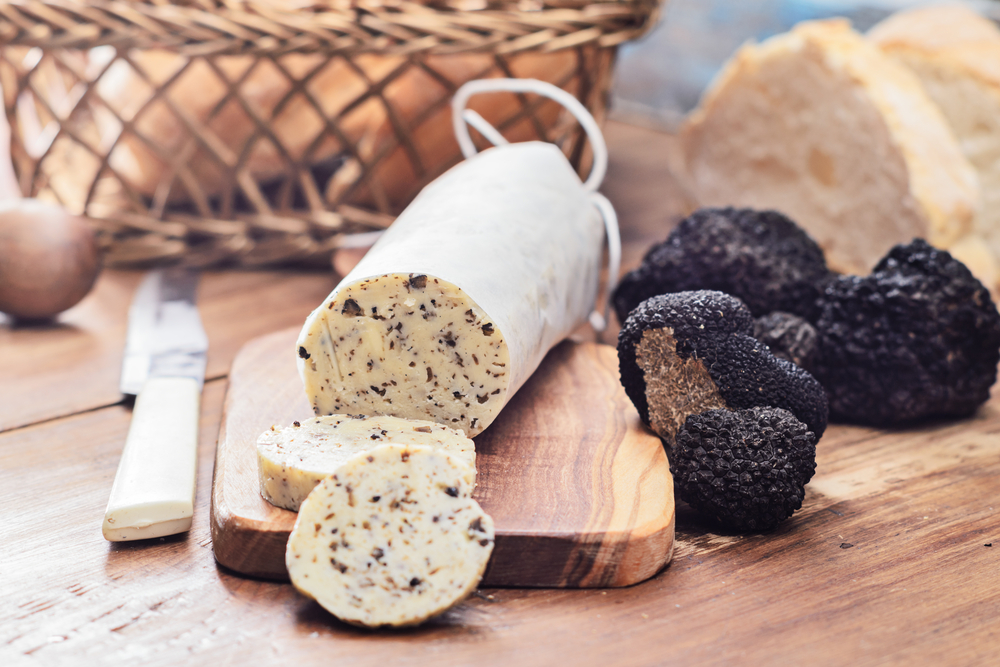
Homemade Truffle Oil
As previously mentioned, most truffle oil offered in restaurants or on supermarket shelves contains synthesized truffle essence. You can have a leg up on the purveyors of this pricey oil and make your own true truffle oil at home! To do so:
- Start with a good quality olive oil. Warm the oil to 120F to 140F.
- Use a food thermometer to monitor the temperature of the oil; once it reaches the target temp, turn off the heat.
- Grate or shave your fresh truffles into the oil, allowing them to steep until the oil has cooled, approximately 30 minutes.
- Strain the oil. Leaving pieces of truffle in your oil can cause it to spoil quickly.
Bear in mind that fresh truffle oil will only keep for up to two days.
Final Thoughts:
Truffles are considered a delicacy the world over for their unique flavor and pungent aroma. They demand a particular set of conditions in order to be cultivated and a license to harvest in the wild, furthering the allure of this expensive fungus. If you get your hands on some truffles, they can be added to sauces and pasta or grated and sprinkled on top of a dish to add a memorable finish. Thankfully, there are a variety of ways to preserve them as well. Next time you get the opportunity to use truffles of any variety in your cooking, it is an absolute must-try!




